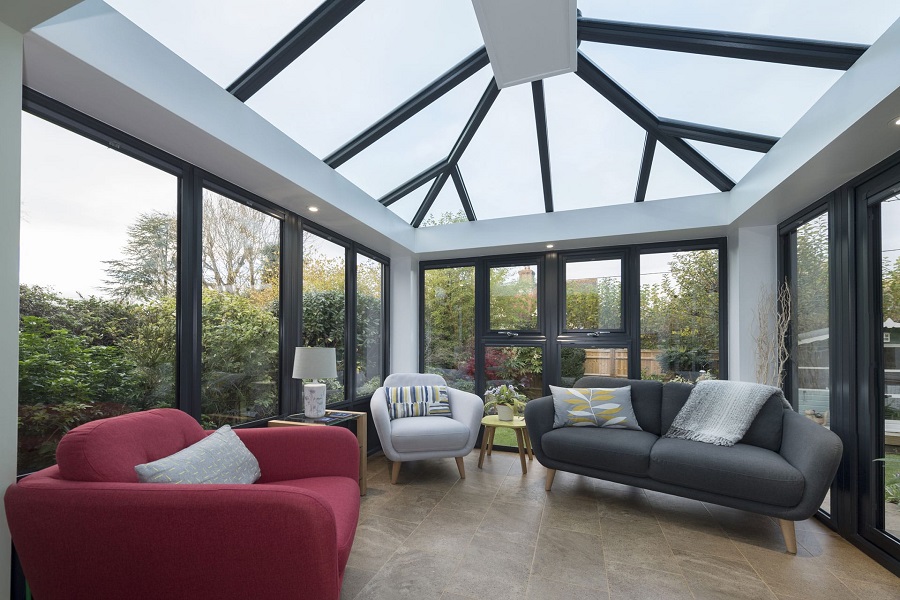
We all want underfloor heating in our rooms! It is a great investment that will help save you power and money. At Underfloor Heating Trade Supplies, we widely get asked whether underfloor heating can be installed in a conservatory. In short: yes, it can! But how? In this article, we will go through how you can install underfloor heating in your conservatory, and how the right design and flooring of your conservatory can provide more sufficient results from your underfloor heating.
Contents
How to add value to your conservatory by using underfloor heating
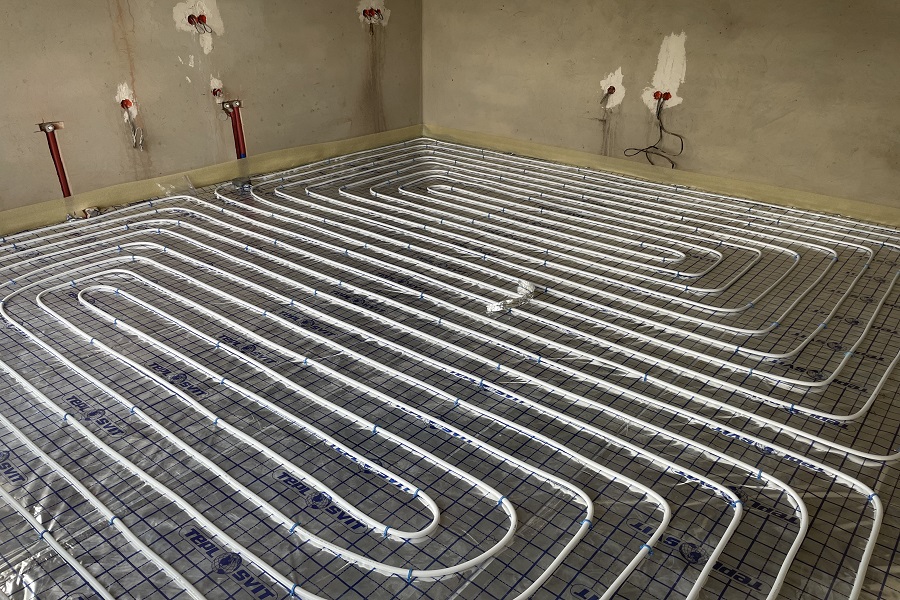
Did you know that by installing underfloor heating in your conservatory, that you would also be adding extra value to your property too?! Many people think that installing underfloor heating to a conservatory will cause building disruptions, but this is a misconception.
Because homeowners often use conservatories as a social space in the summer to enjoy the sunshine and views of the garden, a floor-heated conservatory would also serve extra benefits in the cooler seasons as well. Since underfloor heating is hidden from view, it will give you plenty of space to enjoy the surroundings without worries about it raising the flooring, and without the need to install bulky radiators either.
Additionally, underfloor heating can be added to any floor finish, whether it be timber floors, concrete floors, or any other common household flooring. Adding underfloor heating in your conservatory is incredibly practical, and no matter whether you have ceramic tiling or natural stone installed as flooring in your conservatory, you will always get the ideal finish and heating results from installing electric or water underfloor heating in your conservatory and thus increase the overall value of the property.
Building Regulations for your conservatory
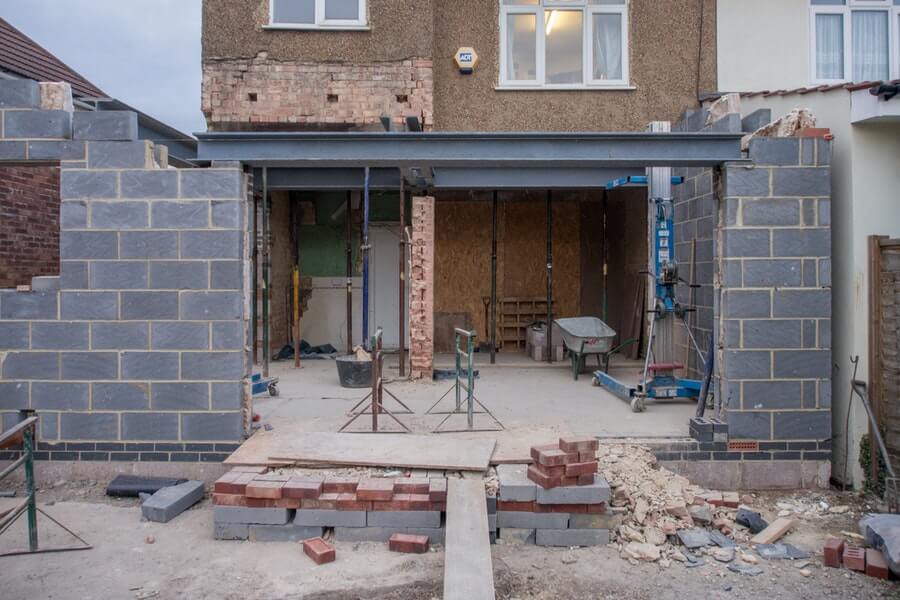
When considering your options for installing underfloor heating in your conservatory, the initial decision to make is whether you prefer a complete conservatory conversion or extension. Your choice will have implications on the overall expenses, the requirement for planning permission, and the specific building regulations that need to be followed.
As defined by FENSA, the authoritative body for the window industry, a conservatory is characterised by the following criteria:
- At least 75% of the roof area consists of translucent material.
- At least 50% of the wall area is made up of translucent material.
- It is either not heated or heated through a separate system with its own controls.
- It must be separated from the main dwelling by exterior doors.
To ensure optimal enjoyment of underfloor heating in your conservatory or extension, it is recommended to install our essential conservatory underfloor heating kits. This will allow you to fully utilise the space throughout the year, regardless of the external temperature.
What Causes Heat Loss in your Conservatory?
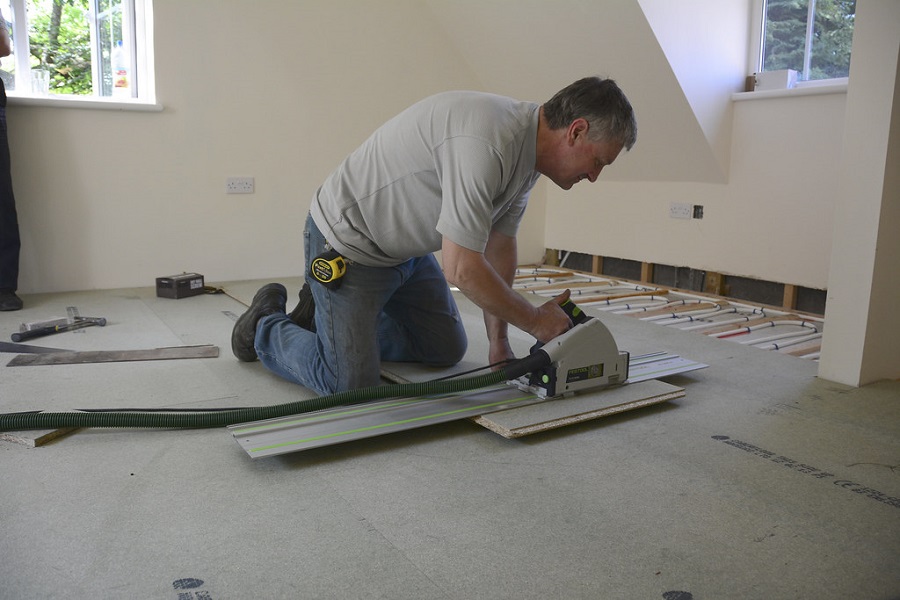
Understanding the factors that contribute to heat loss in a conservatory is crucial for maximising energy efficiency. Several elements can lead to heat escaping from this space.
One of the primary culprits of heat loss in a conservatory is inadequate insulation. Insufficient insulation in the roof, walls, and even the floor can result in significant thermal leakage. By ensuring proper insulation measures are in place, you can minimise heat loss risk and maintain a comfortable temperature inside the conservatory.
Another common cause of heat loss in a conservatory is poorly insulated windows and doors. If the glazing and frames are not designed to be energy-efficient, they can cause heat to escape easily. Upgrading to double or even triple-glazed windows and thermally efficient doors can greatly reduce heat loss and improve overall insulation.
Air leaks and draughts also play a significant role in heat loss in conservatories. Small gaps or cracks around windows, doors, and other structural elements can cause cold air to seep in while warm air escapes. Identifying and sealing these air leaks through proper weatherstripping and caulking can effectively prevent heat loss in homes.
Moreover, the type of roofing material used in the conservatory can contribute to heat loss. Certain roofing materials have lower thermal resistance and can allow heat to dissipate more readily. Opting for insulated roofing panels or materials with better thermal properties can help retain heat within the conservatory.
Lastly, the size and positioning of radiators or heating sources within your conservatory can impact heat loss. Inefficient heating systems may struggle to maintain a consistent temperature, leading to increased heat loss. Ensuring proper placement of radiators or underfloor heating can help combat this issue.
Cost of Installing Underfloor Heating in your Conservatory
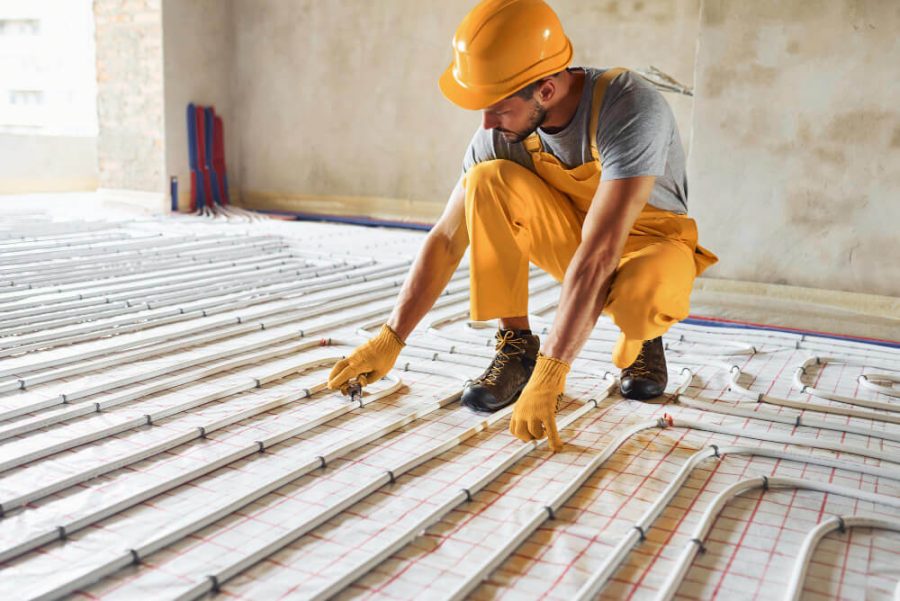
An upfront cost for installing underfloor heating in your conservatory can vary depending on the type of system that you wish to install, as well as the size of the area that you wish to occupy. For instance, a loose wire electric heating system, to heat a m2 space, including heating controls, would cost approximately £50 – 75 plus VAT for electric, and £120 – 135 for wet underfloor heating. To get an accurate price, you can check for prices using Checkatrade.
Which flooring base in your conservatory is best for underfloor heating?
To ensure you get the most efficient results from installing underfloor heating in your conservatory flooring, you can use this guide to check which flooring would work best for you.
Concrete base
A concrete base is a widely favoured option, although it requires additional time for concrete to set. Concrete bases provide better results when installed with underfloor heating systems.
Wooden base
Thick timber lengths are utilised and secured with bolts to create a sturdy foundation, particularly suitable for areas with challenging slopes. If your home has a slope or is built on uneven ground, a wooden base will provide better results for your conservatory.
Raised flooring
This option, which is more costly, relies on the conservatory walls to bear the weight. It is a more intricate method typically employed in sloped landscapes.
Is the base important?
The choice of substrate influences the construction of your underfloor heating system. For concrete substrates, use undercoated insulation boards, while for timber substrates, coated insulation boards are advised to enhance rigidity.
Before you question the necessity of insulation boards, the answer is yes! Without them, your underfloor heating system would be less efficient and would result in higher running costs.
Tiled and Stone Flooring
When opting for tile or stone floors in your conservatory, there are many choices. You can either install a heated and decoupled system or utilise a heating mat consisting of pre-spaced heating cables secured to mesh matting.
It’s crucial to remember that tiled floors can be prone to cracks and gaps due to temperature fluctuations. For this reason, we generally recommend the installation of a heating and decoupled system for any conservatory projects. This type of underfloor heating system is specifically designed to prevent cracking, lifting, and delamination of tiled floors, while also providing a decoupling layer that allows independent movement of the tiled surface from the substrate.
Another advantage of this particular heating system is its ability to offer different heating outputs by adjusting the cable spacing. For any conservatory, we suggest using the highest output available, which is 195W/m2. A 200W/m2 heating mat can also work, but using a decoupled membrane is preferable.
Controllability
Controllability is another crucial aspect in maximising the efficiency of installing underfloor heating in your conservatory. We suggest selecting a thermostat that suits your style. If you prefer smart technology, a thermostat would be an ideal choice.
We have recently produced an article about how to take a meter reading from various heating meters if you are a UK homeowner, including what a meter reading looks like, as well as taking readings from electric or gas meters.
Learn how to retrofit underfloor heating in your home for better results.
Benefits of adding underfloor heating in your conservatory
By incorporating a floor-heating system, your conservatory transforms into a unique living space that can be cherished even during the colder months. This allows you to soak up the heat of sunny winter days while staying warm and comfortable indoors. Additionally, underfloor heating operates discreetly, eliminating the need for bulky radiators and granting you more room to fully enjoy your conservatory.
Underfloor heating proves suitable for all types of flooring finishes, although a practical and durable floor is generally preferred for conservatories. Ceramic tiles and natural stone, renowned for their resilience and responsiveness, stand as favoured choices for flooring in conjunction with underfloor heating.
Which system to choose for your conservatory?
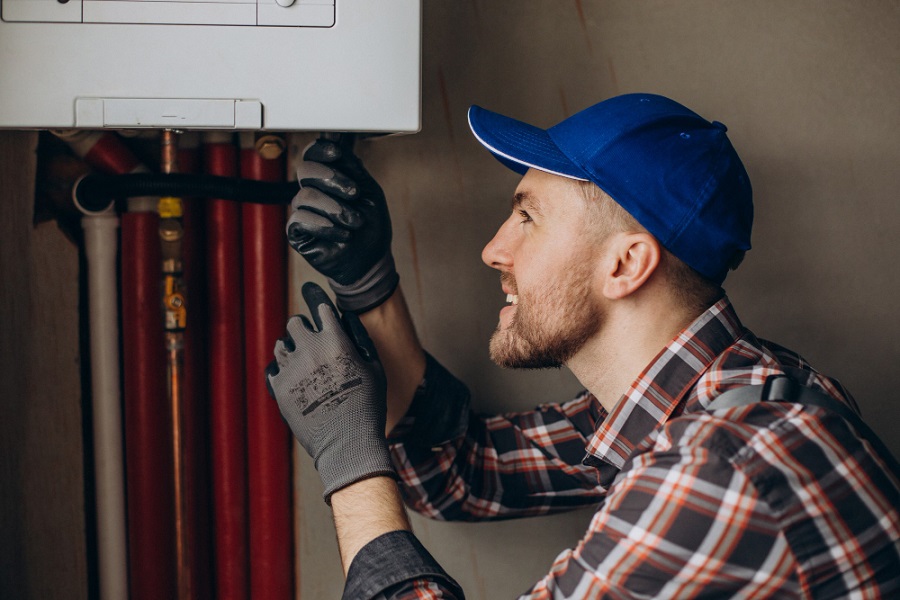
Each underfloor heating system can provide different benefits throughout the year. Although we have our own conservatory heating kits, you could alternatively use an electric underfloor heating system, which we highly recommend for this purpose.
Advantages of using electric underfloor heating in your conservatory
Comfort: Installing electric underfloor heating in your conservatory ensures a consistent and comforting warmth that envelops every inch of your conservatory’s flooring, reducing cold spots and cultivating a snug atmosphere.
Energy Efficiency: The efficiency of electric underfloor heating shines, particularly when combined with a well-insulated conservatory. It enables precise control over the temperature and offers zoning flexibility, allowing you to heat specific areas as required, enabling you to save money and energy..
Space Saving: With electric underfloor heating in your conservatory flooring, it will occupy no additional space and preserve the aesthetic appeal of your conservatory. Say goodbye to unnecessary radiators or other cumbersome heating systems, granting you more freedom in arranging your furniture without hindrances.
Silent Operation: Unlike other heating systems that produce unwelcome noise, electric underfloor heating operates quietly. It also generates no disruptive sounds or vibrations, fostering a tranquil environment within your conservatory.
Allergy-Friendly: Electric underfloor heating prevents the circulation of dust, allergens, and pollutants in the air, as it does not rely on forced air ventilation. This makes it an ideal choice for individuals with respiratory conditions or allergies, promoting a healthier and more comfortable living space.
Design Flexibility: Opting for electric underfloor heating in your conservatory bestows you with unparalleled design flexibility for your conservatory. Freed from the constraints of radiators or vents, you have the liberty to arrange furniture and embellishments according to your vision, unhindered by other heating-related considerations.
Find out more advantages of underfloor heating now.
Disadvantages of Using Electric Underfloor Heating in your Conservatory:
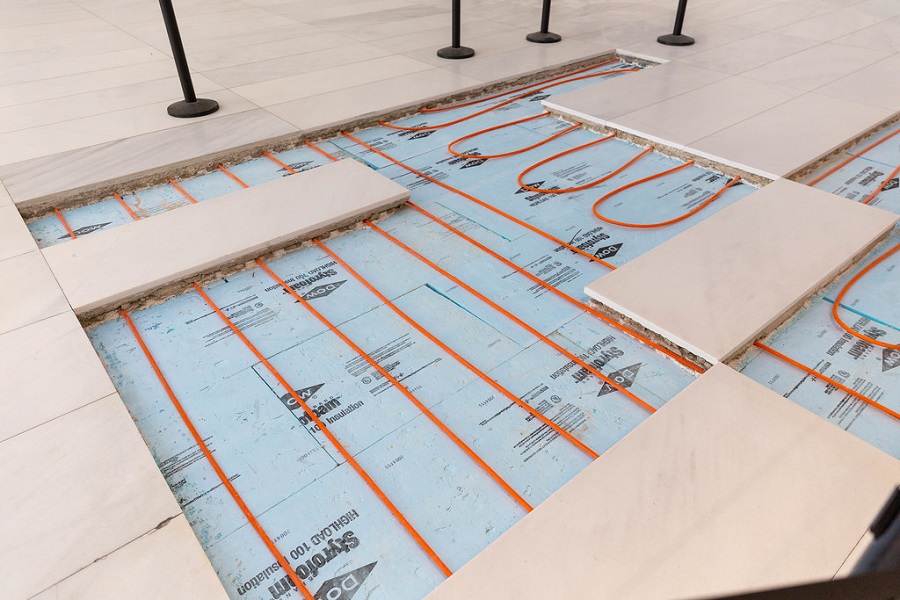
Whilst electric underfloor heating can bring many benefits for your conservatory, there are still disadvantages that you need to be aware of in order for you to make a more informed decision of which underfloor heating system is right for you.
Installation Cost: The initial investment for electric underfloor heating in your conservatory can be higher than alternative heating systems. This encompasses the cost of the heating system itself, installation labour, and potential modifications to the existing floor structure. However, this is only a short term loss, and the upfront cost of installing it will save you more money in the long term.
Operating Cost: Electric underfloor heating may incur higher operational expenses compared to certain heating methods. However, the actual costs depend on variables such as energy prices, insulation quality, and usage patterns. Adequate insulation and zoning strategies can help alleviate these costs.
Limited Heating Speed: Electric underfloor heating may require more time to warm up the conservatory in comparison to other heating systems. Make sure to plan ahead and consider preheating the space to ensure the desired temperatures are attained in a timely manner.
Flooring compatibility: Some flooring types, such as thick carpets or certain natural materials like hardwood, can impede the efficiency of electric underfloor heating. It is crucial to select flooring materials that facilitate optimal heat transfer and are compatible with the system. Make sure to check whether underfloor heating works with carpets.
Maintenance and Repairs: While electric underfloor heating systems typically have a long lifespan, addressing issues or damages may need professional intervention. Repairing or replacing components of the system can be more intricate and costly.
Limitations for Renovations: If you want significant changes or renovations for your conservatory in the future, electric underfloor heating might impose constraints or require additional planning and expenses to modify.
Water underfloor heating
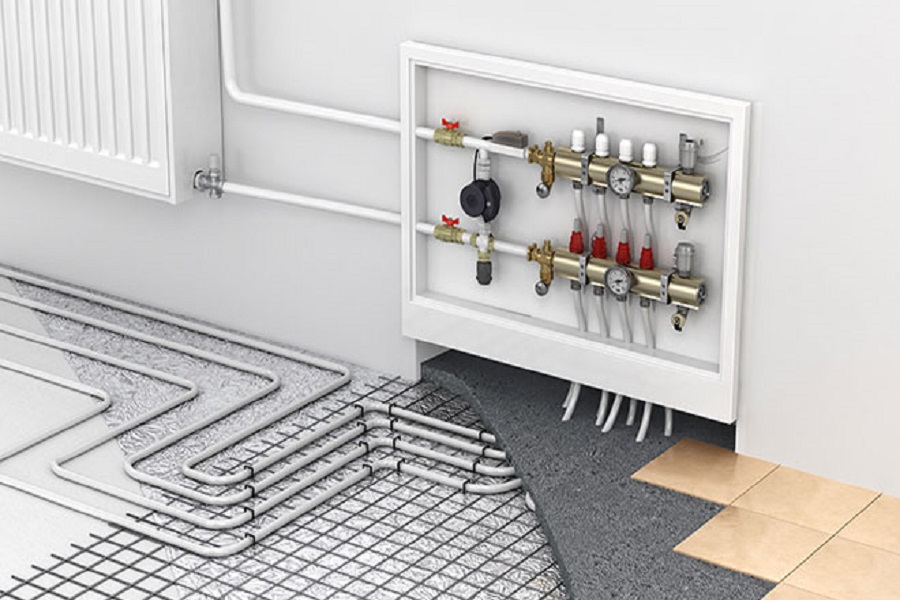
Alternatively, water underfloor heating can provide ample results for heating your conservatory. To help you make the right decision, here are the advantages and disadvantages of adding water underfloor heating to your conservatory:
Advantages of Using Water Underfloor Heating in your Conservatory:
Energy Efficiency: Water underfloor heating is highly energy efficient, particularly when combined with a well-insulated conservatory. It operates at lower water temperatures, resulting in reduced energy consumption compared to traditional radiator systems.
Comfort: Wet underfloor heating provides more radiant heating results and sits comfortably under your conservatory flooring. It will greatly reduce cold spots within the space as well as cosiness, so that you can even enjoy sitting in your conservatory in the winter too without fear of feeling cold.
Zoning Capability: Water underfloor heating is incredibly versatile, and is perfectly suited for zoning purposes. You can divide your conservatory into different heating zones with underfloor heating, so that you can control the heating capabilities in each area and reduce your heating costs.
Design Freedom: You have more design freedom when it comes to installing water underfloor heating in your conservatory so long as it is retrofitted professionally. You can then adjust your conservatory furniture accordingly to suit the flooring aesthetics.
Silent Operation and Long Lifespan: You are guaranteed to have a quiet environment with wet underfloor heating due to its durability and longevity. When installed properly, it can last several years without a single fault, and will be incredibly reliable for generating warm, fast results.
Disadvantages of Using Water Underfloor Heating in your Conservatory:
Everything has its faults, and you need to make sure you are aware of the disadvantages of wet underfloor heating as well, so that you can make the right choice for your conservatory following our advice.
Installation Complexity: Installing wet underfloor heating has proven to be more complicated than electric underfloor systems, since they are created using pipes as opposed to wiring. It involves laying pipes or mats and connecting them to a heat source. You may need to modify your existing flooring to accustom your wet underfloor heating system.
Initial Cost: The initial investment for a water underfloor heating system is typically higher than that of traditional radiator systems or electric underfloor heating. This includes the cost of materials, labour, and potential modifications to your floor structure.
Response Time: It is important to note that water underfloor heating systems may have a slower response time.. The system requires time to heat the water and warm the floor.
Maintenance and Repairs: While water underfloor heating systems are generally durable, make sure to monitor potential issues or risks that could cause the pipes to become damaged. This may result in higher maintenance costs and disruption during repairs.
Inflexibility for Renovations: When making changes to your conservatory, be aware of the limitations of the underfloor heating system, and plan around it.
Risk of Leakage: This occurrence is irregular, but still has the possibility to cause problems for your conservatory. You can reduce the chances of risk by getting a professional to install your underfloor heating system, and limit chances of obstruction as well as other factors.
Can you repair underfloor heating? Learn more with these 5 essential tips!
Will a conservatory retain heat from underfloor heating?

Installing underfloor heating in your conservatory will offer superior heat retention compared to other heating methods due to its ability to minimise heat loss through the translucent walls and windows. However, it is crucial not to compromise on conservatory insulation. Maintaining an optimal level of insulation is essential to prevent cold air infiltration and ensure the warmth generated remains inside the conservatory.
To optimise efficiency of installing underfloor heating in your conservatory, we recommend choosing a heat loss calculation service before buying your underfloor heating system. This way, you can ensure that the underfloor heating system you choose is perfectly suited to your specific requirements and the dimensions of your conservatory. Additionally, you can determine if any extra heating elements like radiators or heated towel rails are needed.
Doing this will allow you to retain heat in your conservatory using underfloor heating so that you can optimise better results and performance from your investment in the product.
Can you heat a conservatory all year round? It’s time to find out.
Optimise efficient results from underfloor heating in your conservatory
In conclusion, installing underfloor heating in your conservatory can bring many benefits, from better heating retention to improved energy efficiency. Having underfloor heating in your conservatory will work better in the long run compared to other heating systems such as radiators. The layout and design of your conservatory should bring little concerns when it comes to installing underfloor heating inside it, and by considering what support or planning is required, you can keep your conservatory warm all year round without too many concerns and keep you and your guests cosy and comfortable.
FAQs
Can I install underfloor heating in an existing conservatory?
Yes, it is possible to install underfloor heating in an existing conservatory. However, the feasibility and complexity of the installation may vary depending on the construction of your conservatory and the type of underfloor heating system you choose.
What types of underfloor heating systems are suitable for a conservatory?
There are two main types of underfloor heating systems: electric and water-based. Both can be suitable for a conservatory. Electric systems are easier to install and more suitable for smaller areas, while water-based systems are often recommended for larger spaces or when the conservatory is part of the central heating system.
Will underfloor heating raise the floor level of my conservatory?
The increase in floor level depends on the type of underfloor heating system you choose. Electric systems are generally thin and won’t significantly raise the floor level. However, water-based systems require a layer of screed or insulation boards, which may raise the floor level slightly.
Can I retrofit underfloor heating under an existing floor in the conservatory?
Retrofitting underfloor heating beneath an existing floor in a conservatory is possible, but it can be more challenging and disruptive. It may involve removing the existing floor and possibly modifying the subfloor to accommodate the underfloor heating system.
Will underfloor heating be sufficient as the sole heating source in my conservatory?
Underfloor heating can provide effective and comfortable heating in a conservatory. However, its suitability as the sole heating source depends on various factors such as insulation, conservatory size, and local climate conditions. It’s recommended to consult with a heating specialist to determine the appropriate heating solution for your specific needs.
Is underfloor heating compatible with all flooring types?
Underfloor heating is compatible with many flooring types, including tiles, laminate, engineered wood, and certain types of carpets. However, it’s important to check the manufacturer’s guidelines and ensure that the chosen flooring material is suitable for use with underfloor heating to ensure optimal heat transfer.
Sources
FENSA. (n.d.). The Industry Gold Standard for Building Regulations. [Accessed 23/05/23] from: https://www.fensa.org.uk/
Checkatrade. (n.d.). Underfloor Heating Cost – How Much to Install Underfloor Heating? [Accessed 23/05/23] from: https://www.checkatrade.com/blog/cost-guides/underfloor-heating-cost/
